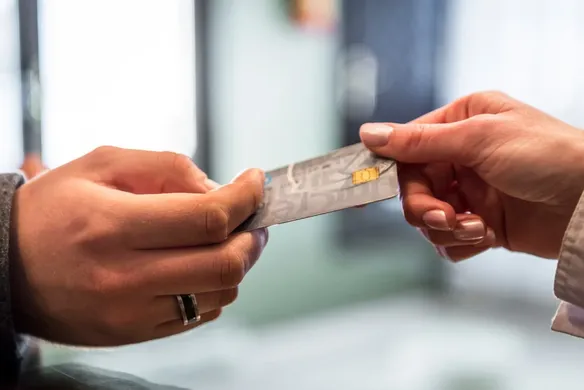A chargeback, or dispute, is something that your customers can initiate when they are unhappy with a credit or debit card payment you processed at your business. While you may disagree with your customer, in most cases their bank will open a formal dispute on your customer’s behalf.
The process may feel unfair or frustrating. Thankfully, Square is here to help you navigate through it. Once we receive notification from your customer’s bank that the dispute has been filed, Square immediately notifies you of the details. If you choose to challenge the dispute, we will do that on your behalf, and we will ask you to provide us with any information and evidence you have to help us do so. (You can also accept the dispute if you would like to refund your customer.)
While we do everything we can to help you win the dispute, the final decision isn’t up to us — the card issuer is the ultimate arbiter of the resolution. For each dispute type, there are specific types of documentation that are considered more credible than others and may help support your challenge. This is known as “compelling evidence,” and the more of it you can provide, the better your chances are of winning.
While we hope that chargebacks aren’t something you have to experience with great frequency, it’s important for you to understand how to defend against them so you can be prepare. We’ve put together an overview of three most common types of chargeback disputes, along with ways to best help prevent and defend against them.
Common non-fraud chargeback #1: Goods or services were not as described or were defective
Customer complaint: The quality of product or service was not what was promised.
Your prevention plan: Although there’s no guaranteed way to prevent chargebacks, there are some proactive steps you can take to help:
- On the document where the total price is listed — whether that’s an invoice, a contract, or an email — be sure to accurately describe in detail the goods or services offered. This can reduce the possibility for misunderstanding or confusion. Review this description with your customer.
- Prior to delivery or beginning work, get your customer’s signature (electronically or in writing) acknowledging this description of the goods or services, along with your terms and conditions.
- Provide your customer with tracking information including the shipping carrier, expected delivery date, and tracking number for all goods requiring shipping and handling.
- Obtain your customer’s signature after goods and services are rendered or delivered, acknowledging that the services or goods have been rendered or delivered as described. Keep a record of this delivery confirmation.
- Be available for your customer should they have any questions or concerns regarding the goods or services delivered.
Your best defense in a dispute: You’ll want to provide specific and concrete evidence that shows your customer is in possession of the merchandise as described, or received the service as described. If the person receiving the merchandise or services is not the the person who paid for it (the cardholder), make sure you also provide evidence linking the person receiving the merchandise or services to the cardholder.
Your response plan: Your first step is to reach out to your customer. Try to understand the reason for their complaint and resolve the situation. If you can’t do that, card issuers consider the following compelling evidence for challenging the dispute:
- Documentation (e.g., signed contract, invoice, bill of lading, etc.) or photographic evidence illustrating that the cardholder acknowledged merchandise delivered or services rendered as described.
- For damaged or defective claims, documentation or photographic evidence (e.g., screenshots of email exchange, inspection documentation, etc.) illustrating your effort to replace or repair the merchandise or complete the work.
- Service documentation (e.g., work order, signed contract, etc.) illustrating proof that the service was provided as described.
Common non-fraud chargeback #2: Goods or services were not received or were not rendered
Customer complaint: Products were not delivered and/or services were not rendered.
Your prevention plan: Although there’s no guaranteed way to prevent this, you can:
- Set clear expectations regarding the estimated schedule for services to be rendered or for product delivery. Make sure you have this in writing so you and your customer have a record.
- Maintain clear communication over the course of the transaction to inform your customer of any potential delays or updated delivery or service dates. If you do this verbally, make sure you document that communication.
- Provide your customer with all pertinent tracking information so that they can monitor the progress of their delivery.
- Require signatures from your customer to acknowledge when a delivery is complete or services are rendered.
Your best defense in a dispute: Again, you want to provide specific and concrete evidence to prove a link between the person receiving the merchandise or services and the cardholder. You should also try to prove that the cardholder is in possession of the merchandise and/or has used the service.
If you can’t, here is the compelling evidence you will need to challenge the dispute:
- Documentation (e.g., signed pickup form, delivery confirmation, work order, etc.) or photographic evidence (e.g., services being rendered, installment completions, etc.) illustrating that the cardholder received goods or services. (The same goes for e-commerce transactions: documentation or proof that the digital product or service was provided, such as the date and time goods/services were downloaded.)
Common non-fraud chargeback #3: Customer requests a credit or their credit was not processed
Customer complaint: Cancelled the order of goods or services.
Your prevention plan: Order cancellations are a part of doing business, but to make sure that they don’t cause you or your customers problems, you should:
- Clearly state your refund, return, and cancellation policy on all transaction documents (e.g., signed contract, receipt, etc.). (You probably want to make this available on your website and in your store as well.)
- Respond to customer inquiries or concerns promptly and courteously.
- Be aware of the local regulations and laws around refunds, cancellations or credits.
Your best defense in a dispute: You should provide specific and concrete evidence to prove that your cancellation and/or refund policy was clearly stated at the time of the transaction and acknowledged by your customer.
Your response plan: Talk to your customer first and see if you can resolve the complaint that way. If not, here’s the compelling evidence that you’ll need:
- Documentation (e.g., transaction receipt, signed contract, invoice, etc.) illustrating that your policies were clearly presented to the cardholder and acknowledged at the time of the transaction.
For more information about how to navigate the disputes process, please see our Support Center article about resolving payment disputes. You can also learn more about how Square helps protect your business with Square Secure here.
Related Articles
- A One-Stop Shop for Your Countertop
- What Is Two-Factor Authentication? And How Does It Help Secure Your Business?
![]()











